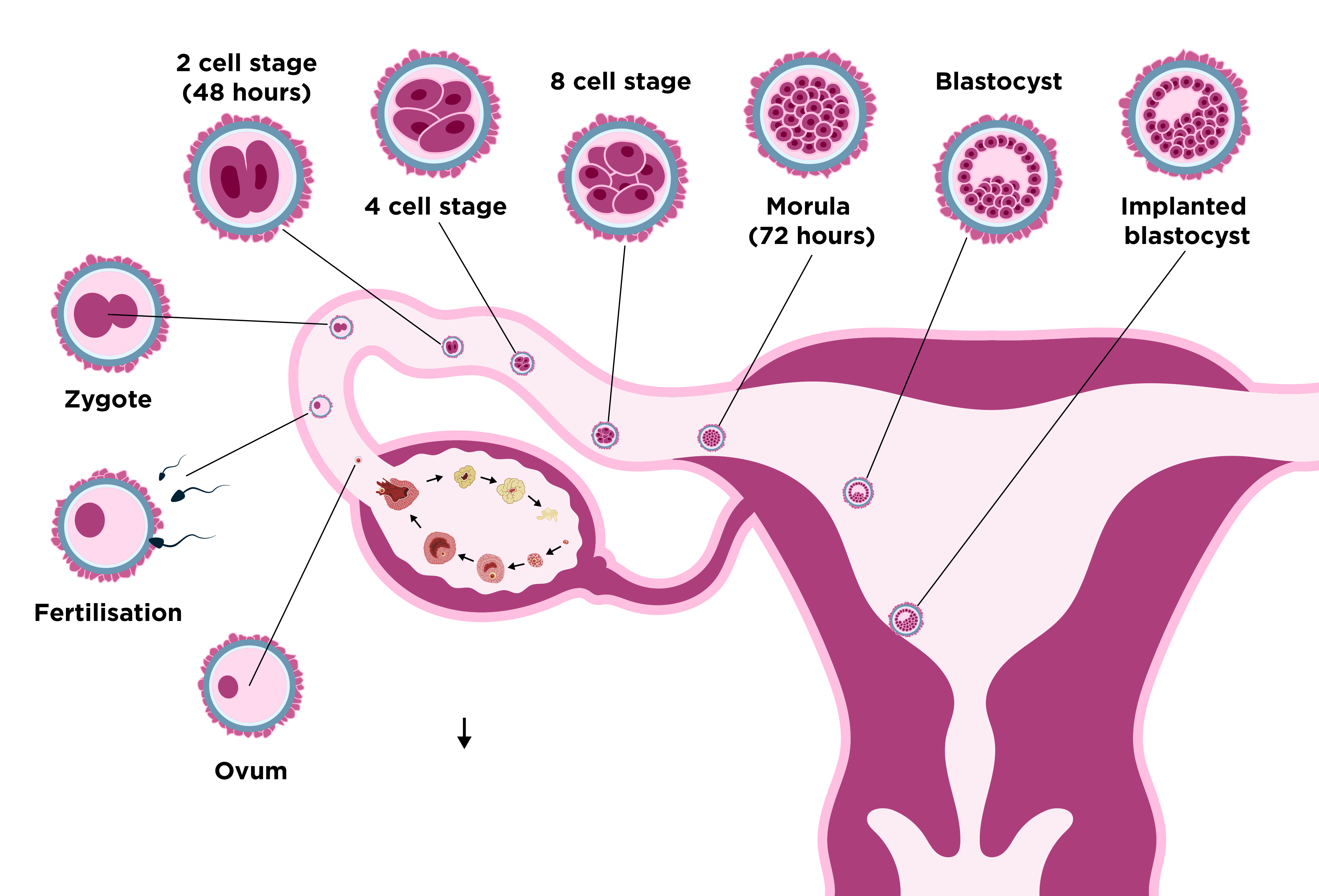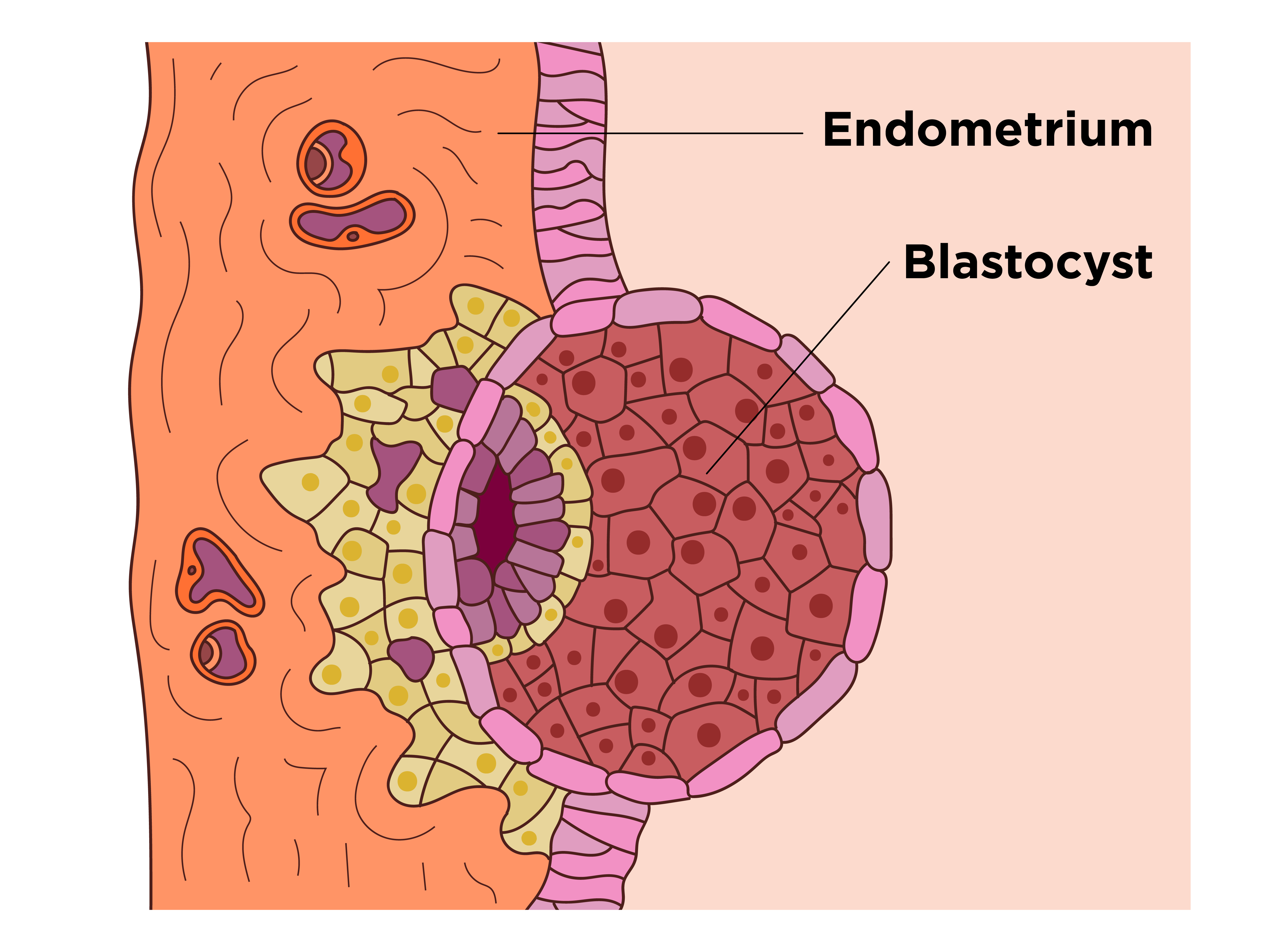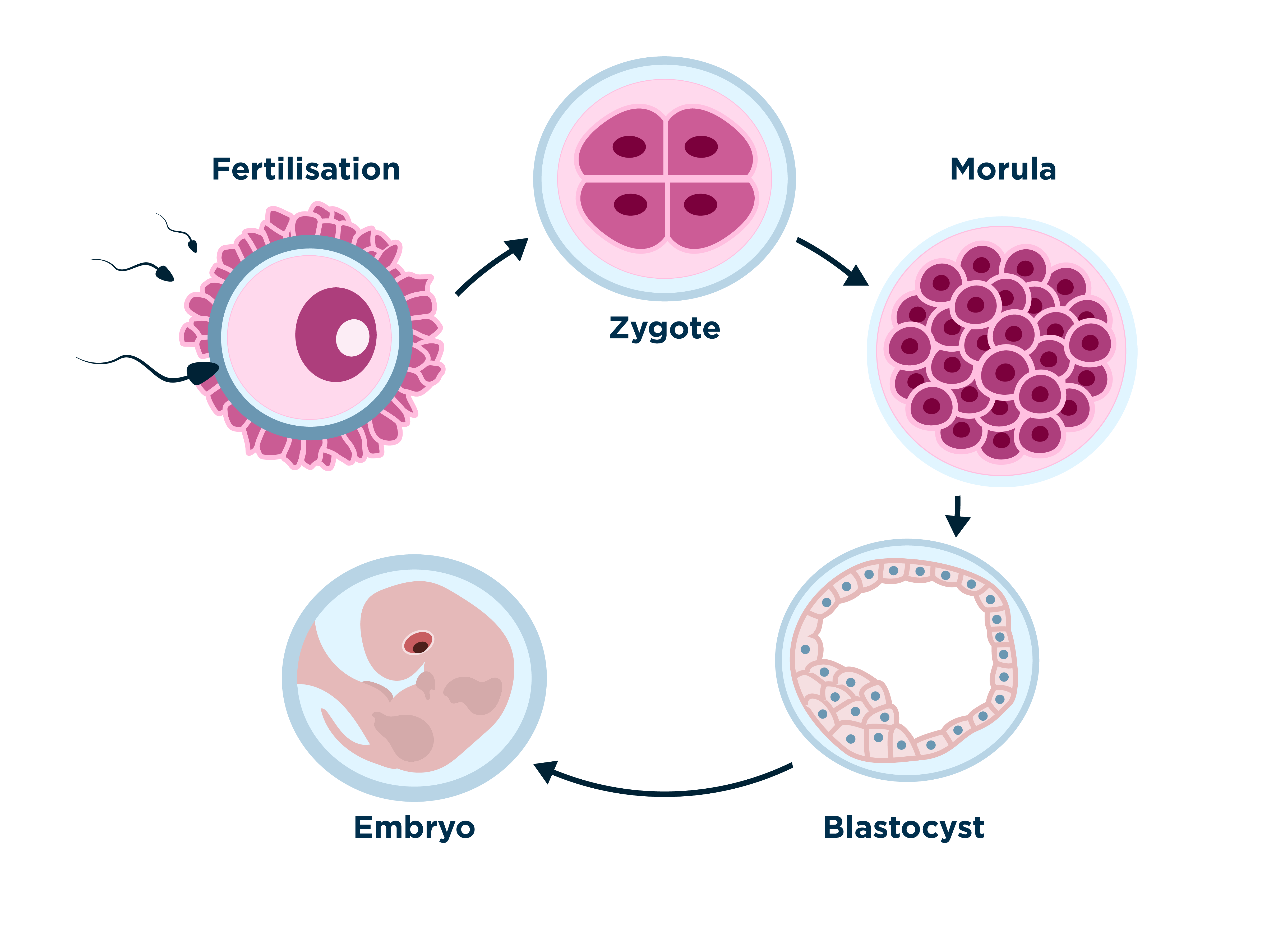implantation
1/16
There's no tags or description
Looks like no tags are added yet.
Name | Mastery | Learn | Test | Matching | Spaced |
|---|
No study sessions yet.
17 Terms
What is implantation?
The process by which a fertilised ovum (zygote) attaches to the lining of the uterus in the female reproductive system.
What must happen before implantation can occur?
The zygote must travel through the fallopian tube into the uterus.
How does the zygote change as it moves through the reproductive system?
It divides by mitosis, forming 2, 4, 8 cells, and so on.
What is the morula?
A solid ball of cells formed approximately 72 hours after fertilisation.
What is the blastocyst?
A fluid-filled ball of cells that develops from the morula 4–5 days after fertilisation.
Where does the blastocyst implant?
In the endometrial lining of the uterus.
How does the blastocyst implant into the uterine wall?
It secretes enzymes that soften the uterine wall, allowing it to sink into it.
What does the outer layer of the blastocyst develop into?
The amnion and chorion.
What is the role of the chorion and part of the endometrium?
They develop into the placenta, which provides oxygen and nutrients to the developing offspring.
When does the blastocyst become known as an embryo?
After successful implantation.
When is the embryo called a foetus?
Once organs begin to form, around 8 weeks after fertilisation.
When is the foetus called a baby?
Only after birth.
What happens if the blastocyst cannot implant successfully?
It will be expelled from the body during menstruation.
What can cause implantation failure?
Problems with the blastocyst, uterine lining, or hormone levels.
Stages of development

Implantation

Flow diagram of the stages of development
